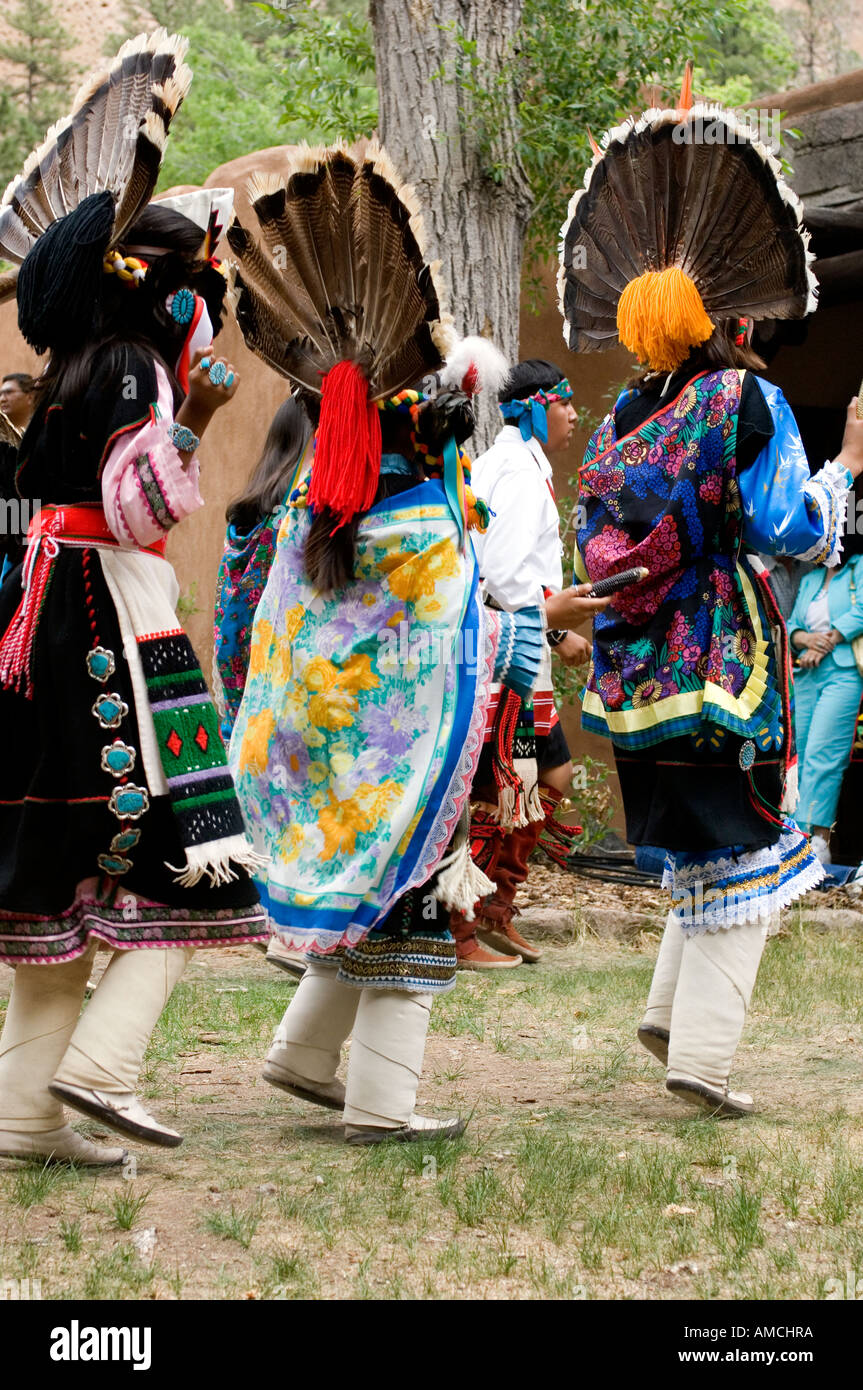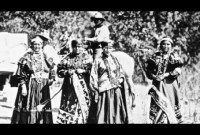
The Unseen Rhythms: Zuni Pueblo Dances as Living Prayer
The air crackles with an ancient energy. Beneath the vast, cerulean sky of New Mexico, the dust of the Zuni Pueblo plaza swirls gently, stirred by a rhythm that pulses not just from drums, but from the very heart of the community. Here, in one of the largest and most culturally intact pueblos, traditional dances are not mere performances staged for an audience. They are living prayers, vibrant manifestations of a profound spiritual connection, a testament to thousands of years of uninterrupted cultural practice, and the very lifeblood of the Zuni people.
To witness a traditional Zuni dance is to step into a realm where time seems to fold in on itself, where the past and present converge in a spectacular display of devotion and continuity. It is an experience that transcends mere observation, demanding reverence and an understanding that what unfolds is sacred work, vital for the balance and well-being of the world, not entertainment.

A Legacy Woven in Motion
For the Zuni, a federally recognized tribe of Pueblo people, their traditional dances are an integral part of their spiritual and social fabric. Unlike staged theatrical events, these dances are deeply intertwined with their religious calendar, agricultural cycles, and the maintenance of harmony between the human world and the spiritual realm. They are prayers in motion, petitions for rain, blessings for the harvest, ceremonies for healing, and expressions of gratitude to the Ancestors and the powerful spiritual beings known as Kachinas (or Kokokshi in Zuni).
The origins of these dances are lost in the mists of time, passed down orally through generations, often unchanged for centuries. Zuni oral traditions speak of their emergence from the earth, guided by spiritual entities, carrying with them the knowledge of these sacred rituals. Despite centuries of colonial pressure, including Spanish conquest and American assimilation policies, the Zuni have fiercely guarded their ceremonial practices, ensuring their survival and continuity. This resilience is a hallmark of the Zuni spirit, and their dances stand as a powerful symbol of their enduring cultural sovereignty.
The Community as One Body
What makes Zuni dances particularly profound is the all-encompassing participation of the community. These are not professional troupes; rather, the dancers are Zuni men, women, and often children, who dedicate themselves to learning and performing these intricate rituals. The preparation for a major dance can take months, involving not just the dancers, but also singers, drummers, costume makers, food preparers, and countless others who contribute to the communal effort.
Elders play a crucial role in transmitting the knowledge, teaching the songs, steps, and the profound meanings behind each movement and symbol. Children observe from a young age, absorbing the rhythms and the reverence, eventually stepping into their roles as participants. This intergenerational transfer of knowledge ensures that the traditions remain vibrant and authentic, a living link to their ancestors. Every member, whether directly dancing or quietly supporting from the sidelines, contributes to the collective energy that animates the plaza.
A Kaleidoscope of Symbolism: Regalia and Adornment
The visual spectacle of a Zuni dance is breathtaking. Dancers are adorned in elaborate regalia, each element imbued with deep symbolic meaning. Vibrant colors, intricate patterns, and natural materials combine to create an awe-inspiring sight. Feathers, often from eagles or turkeys, symbolize connection to the sky and spiritual flight. Turquoise, a sacred stone, represents the sky, water, and life. Corn, the staple of Pueblo life, is frequently incorporated, symbolizing sustenance, fertility, and the interconnectedness of all life.

Shells, beads, animal furs, and painted bodies further enhance the visual narrative. The designs painted on dancers’ bodies or masks are not arbitrary; they often represent specific spiritual entities, natural forces, or elements of the Zuni cosmology. For instance, specific patterns might denote rain clouds, lightning, or the sacred mountains surrounding Zuni. The sound of hundreds of small bells, shells, or rattles attached to the dancers’ legs and arms adds another layer to the sensory experience, creating a percussive accompaniment to their movements.
The Heartbeat and the Voice: Drums and Song
The rhythmic thud of the drum is the undeniable heartbeat of any Zuni dance. Hand-held drums, often made from hollowed-out logs covered with animal hide, are played by groups of men, their synchronized beats providing the pulse for the dancers. This steady, resonant sound is more than just a musical accompaniment; it is believed to connect the dancers to the earth and to the spiritual world, grounding the ceremony in a profound sense of place and purpose.
Accompanying the drums are the ancient chants and songs, sung in the Zuni language. These songs are not mere melodies; they are intricate oral traditions, often narrating stories of creation, invoking spiritual beings, or offering specific prayers. Passed down verbally over countless generations, these songs carry the collective memory and spiritual wisdom of the Zuni people. The voices, sometimes deep and guttural, sometimes soaring and resonant, weave a tapestry of sound that is both haunting and deeply moving, creating an immersive experience that transports observers to a different dimension of understanding.
Cycles of Life and Purpose
Zuni dances are inextricably linked to the natural world and the cycles of life. Many ceremonies are tied to the agricultural calendar, from planting season in the spring, where dances petition for moisture and healthy crops, to harvest time in the fall, where gratitude is expressed for nature’s bounty. Winter ceremonies often focus on renewal, storytelling, and preparing for the coming year.
Beyond agricultural purposes, dances also serve a myriad of other functions: healing, purification, initiation into societies, and reinforcing community bonds. They are a means of teaching moral lessons, transmitting historical narratives, and reaffirming the Zuni worldview. Each dance, with its specific movements, songs, and regalia, serves a precise spiritual objective, meticulously followed according to ancient protocols.
Sacred Space and Respectful Observance
The Zuni Pueblo plaza, often a central open space surrounded by traditional homes and kivas (underground ceremonial chambers), transforms into a sacred stage during dances. This is a crucial distinction for visitors to understand: this is not a public spectacle designed for tourism, but a profoundly sacred event to which outsiders may, at times, be respectfully invited to witness.
For those privileged to observe, strict protocols must be followed. Photography, video recording, and sketching are almost universally forbidden. This rule is paramount and non-negotiable, stemming from the belief that capturing images of sacred ceremonies can diminish their spiritual power, violate the privacy of the participants, and misrepresent the deeply religious nature of the event. Quiet reverence, modest dress, and a willingness to simply be present without expectation are essential. As many Zuni elders emphasize, the dances are prayers, and one does not photograph a prayer. Violating these rules is seen as a profound disrespect to the Zuni people and their traditions.
Challenges and the Enduring Spirit
In an increasingly globalized and modernized world, the Zuni Pueblo faces the ongoing challenge of preserving its unique cultural heritage. The lure of modern life, the complexities of economic development, and the pressure of external influences constantly test the strength of their traditions. Yet, the Zuni have demonstrated remarkable resilience.
Leaders and elders consistently emphasize the importance of cultural preservation, language revitalization, and the continued practice of their ceremonies. They understand that their dances are not static museum pieces but living, evolving traditions that must be nurtured and protected for future generations. Educational initiatives within the Pueblo, coupled with a deep sense of collective responsibility, ensure that the Zuni way of life continues to thrive. "Our dances are our identity," a Zuni elder might say, emphasizing that to lose the dances is to lose a part of themselves. "They connect us to our ancestors, to the land, and to the Creator. They are how we know who we are."
A Profound Connection
For those who have the rare opportunity to witness a Zuni Pueblo traditional dance, the experience is often transformative. It offers a glimpse into a worldview that prioritizes community, spiritual connection, and harmony with the natural world over individualism and material gain. It is a powerful reminder of the diversity of human experience and the profound ways in which different cultures find meaning and purpose.
The rhythmic footfalls, the resonant drumbeats, the ancient chants, and the vibrant regalia combine to create an immersive, spiritual tapestry. More than just movements and sounds, Zuni dances are a testament to an enduring spirit, a continuous prayer, echoing across millennia, sustaining a people, and offering a profound lesson in reverence, resilience, and the power of living tradition. They are the unseen rhythms that continue to beat strongly at the heart of the Zuni Pueblo, a timeless expression of their unique and vibrant heritage.


